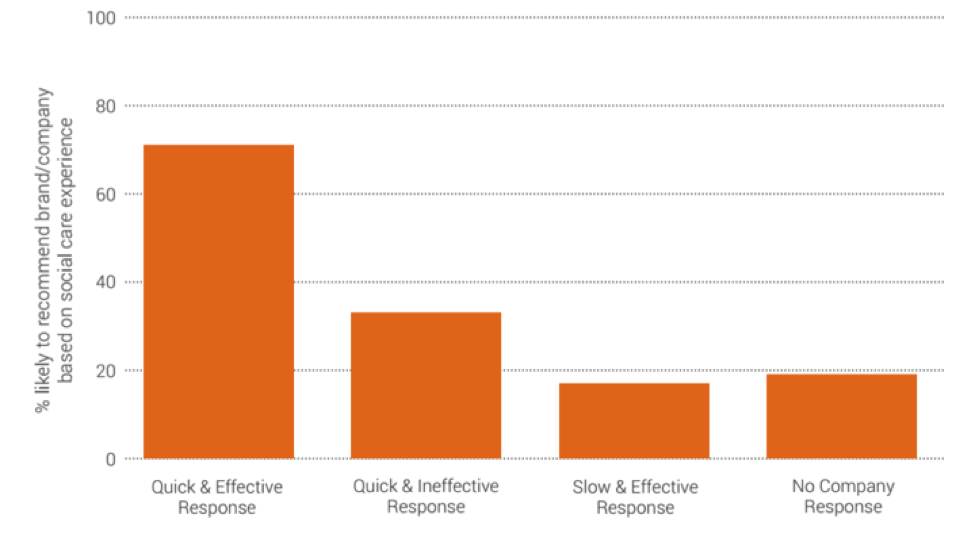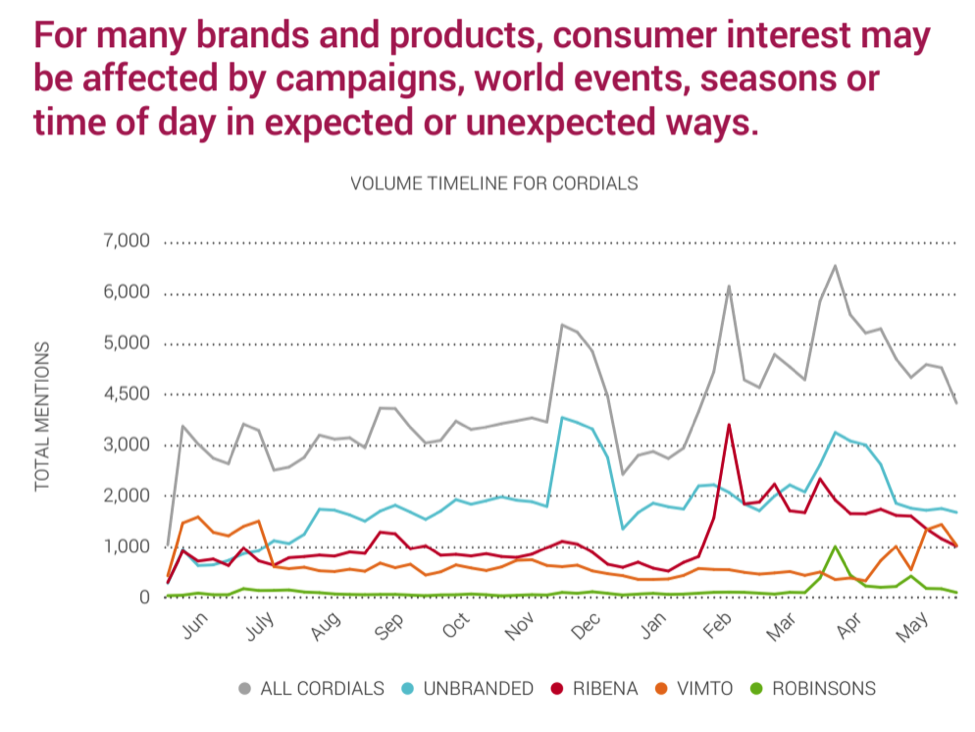If you work in marketing, it’s likely that either you or someone in your team has a KPI relating to engagement. Indeed, Brandwatch’s own forays into OKRs have included some aims to increase social media engagement.
There have been countless articles on determining how to measure engagement, so I will do you the courteous service of ignoring that point for now.
Instead, I’d like to try and show why engagement is actually worthwhile from a business perspective, and how a social media campaign can actually prove valuable to the wider company objectives.
Liking more likes
Attracting more people to your Pinterest page and boosting your Twitter follower count sounds fantastic to social media managers, but proving that it has much benefit to the executive team can be much more difficult.
However, there has been a library of research published to suggest that social media engagement does actually help increase the average customer spend.
This research from Bain has fast become a modern classic in the world of social marketing. The following chart shows that simply engaging with customers on social media can vastly increase the amount of money they spend on your products.
 Even those that are neutral or normally detract from the brand will spend more money if sufficiently engaged on social with that brand.
Even those that are neutral or normally detract from the brand will spend more money if sufficiently engaged on social with that brand.
eBay, the global ecommerce platform, also found that those customers it managed to engage with spent 54% more on the site than those that were not engaged with the eBay community, further testament to the value to brands of building social relationships with consumers.
This is supported by research from Wet Seal, a clothing retailer, which reports that social shoppers have a 2.5 times greater conversion rate than the average customer.
Engagement can even be advantageous to sales in a customer service capacity. This data from Nielsen shows how simply engaging with customer queries on social media can provide a huge boost in the effectiveness of word-of-mouth.
 By engaging promptly with customers in this way, brands can over triple the likeliness that customers will recommend that business to peers than if they do not engage at all.
By engaging promptly with customers in this way, brands can over triple the likeliness that customers will recommend that business to peers than if they do not engage at all.
Yet more evidence that social engagement can lead to better sales performance is revealed by looking closely at statistics about the image network, Pinterest. Our recent report on Pinterest details some of the ways brands can find value in using the site, and begin to measure the performance of their activity.
The following bullet points should help establish just how powerful an impact that social activity can have upon purchasing behaviour.
- The average pin generates 78 cents in sales and drives two visits to company websites. (Piqora)
- 69% of online consumers who visit Pinterest have found an item they’ve purchased or wanted to purchase. (RJMetrics)
- 21% of Pinterest users bought an item in a store after pinning, re-pinning, or liking the item on the site. (Harvard Business Review)
Searching for similar data for sites like Facebook, LinkedIn and Twitter yields equally compelling results.
Ready to engage
Synchronising social data, such as earned mentions, shares and other engagement metrics with traditional marketing KPIs, such as newsletter signups, leads or even sales is perfectly possible in most businesses – though the specifics will vary greatly for each case.
Tracking consumer activity in this way (web traffic, online discussion volumes) in relation to social campaigns can help shed light on the success of a brand’s showing on social media.
Creating engaging campaigns creates engaged customers, which as I have hopefully now begun to demonstrate, creates real business value.
The most engaging, and successful, campaigns are those that are well researched. By listening to the preferences and nuances in behaviour of potential customers online, brands can formulate a strategy to best engage with them.
Understanding which sites customers speak on, during which months, on which days and at what times – as well as what they’re saying of course – can be the key to undertaking interesting and engaging activity.
 By taking advantage of these kinds of insights, UK drinks brand Robinsons (well known for producing cordials) were able to launch a new product called Squash’d on social media.
By taking advantage of these kinds of insights, UK drinks brand Robinsons (well known for producing cordials) were able to launch a new product called Squash’d on social media.
With help from agency Iris Worldwide, the brand were able to identify a topic that would resonate with potential customers online: Wimbledon, the tennis tournament. Or, more specifically, discussion around an iconic location at the venue, which has been dubbed either Henman Hill or Murray Mound – a distinction fuelling plenty of discussion online each July.
 Robinsons seized upon this opportunity for potential engagement by creating a campaign geared explicitly around that debate, using video and social media activity to provoke engagement around not just the hill/mound, but also with the brand.
Robinsons seized upon this opportunity for potential engagement by creating a campaign geared explicitly around that debate, using video and social media activity to provoke engagement around not just the hill/mound, but also with the brand.
By identifying a strong underlying passion for tennis, creatively aligning their brand with Wimbledon and timing their campaign alongside an annual spike in chatter, Robinsons Squash’d more than doubled their mentions for that week.
And we all know what increasing engagement can achieve, right?



